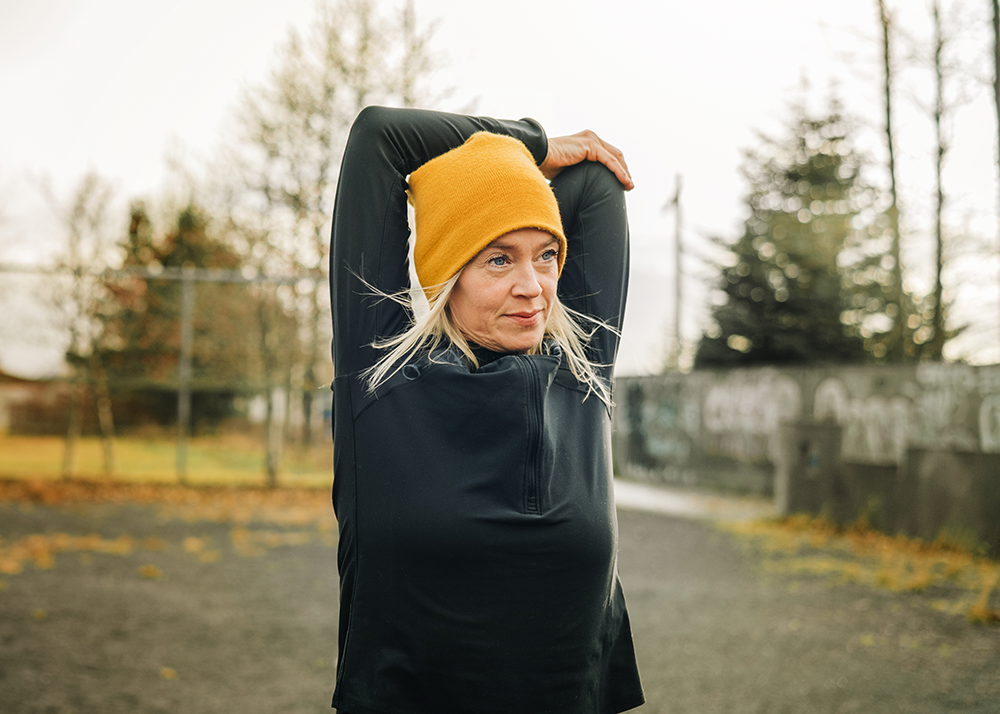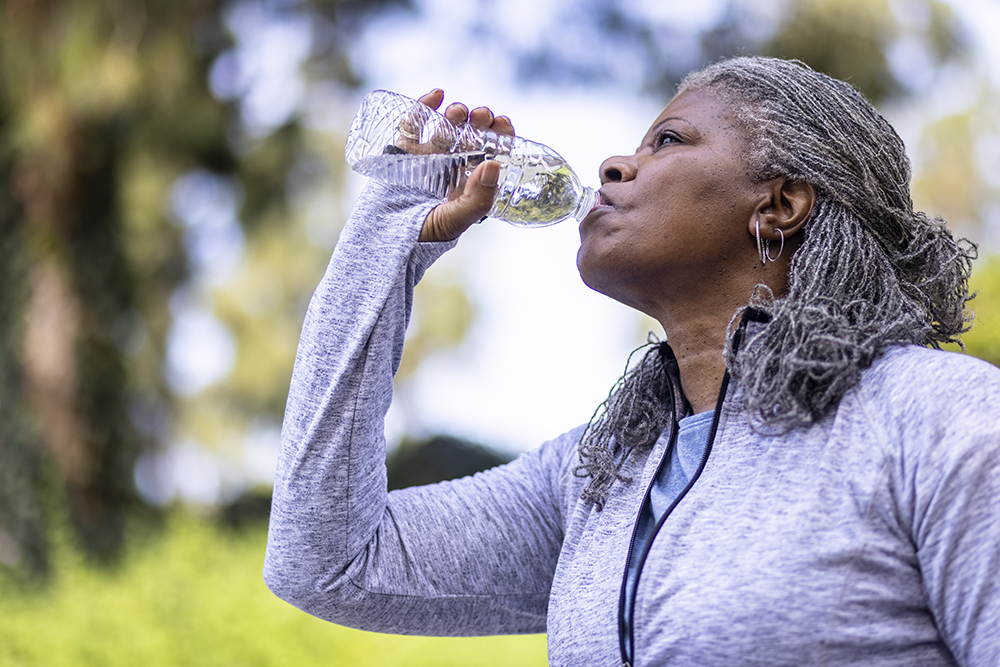You’ve probably heard that weight-bearing exercise helps build strong bones. And if wearing a weighted vest during exercise will help “speed up” the process it seems like a no-brainer…
But are weighted vests safe and effective for those with osteoporosis?
Today I’m sharing what the research says, along with a few tips, so you can make an informed choice on whether you should use one or not.
So, let’s dive into it together!
What Effect Do Weighted Vests Have on Bones?
As you may know, weight-bearing exercises strengthen your bones more than non-weight-bearing exercises.
When you perform weight-bearing exercises such as dancing or running, your feet and legs support your body weight against gravity. As you exercise, your muscles pull on your bones, increasing the load placed on them, and ultimately strengthening them.
So, in theory, adding more weight to your workout routine should help improve your bone health. And that’s the idea behind using a weighted vest.
It adds additional weight to increase the load your bones and the rest of your body support. And in doing so, it increases the benefits of exercises you may already be doing such as walking or jogging.

Plus, weighted vests give you action hero vibes — which your grandkids will love.
Now, weighted vests come in a variety of styles. Most feature a design that goes over your shoulders and extends to the waist, with small pockets that provide space for individual weights. These weights can be removed or added to easily adjust the load.
What Does the Research Say About Weighted Vests?
A small 22-week study involving 37 obese adults who were placed on a calorie-restricted diet showed promising results. One group wore a weighted vest during their day-to-day in addition to changing their diet, and the other group changed only their diet.
Following the study, a DEXA scan measured each participant’s BMD at the total hip, femoral neck, and lumbar spine.
Researchers found that using a weighted vest reduced the loss of hip BMD by 0.013 g/cm2. And increased bone formation in older adults with obesity.
This is promising news that may signal long-term clinical significance. But considering the small sample sizes of this study, the findings warrant replication from a larger trial.
Another benefit of using a weighted vest for osteoporosis is that it helps improve balance. In a randomized control trial, researchers monitored the balance of 36 postmenopausal women with osteoporosis.
Participants were divided into three groups: aerobic, weighted vest, or control. After six weeks of exercise, results showed the control group’s balance score went down by 28.96%.
But the aerobic group boosted their balance score by 49.68%. And get this, the weighted vest group saw a whopping 104.66% increase!
Clearly, the weighted vest group had the best results. This is important because research shows that balance impairment increases the risk of falling in older adults.
Although the sample size was small, the results were so large this study is likely solid.. It suggests that using a weighted vest while exercising can significantly improve balance and mobility and reduce the risk of falls that can lead to fractures. So it’s a good first sign that more research should be conducted.
Now, after hearing all of this, it’s easy to think, “Wow, great, sign me up! This sounds like the perfect way for me to improve my bone health!”
But like anything, there are some caveats.

Is it Safe to Wear a Weighted Vest?
A weighted vest can be a great addition to an established exercise routine.
But it shouldn’t be worn if you already suffer from knee or back pain. Wearing a weighted vest can increase the load on those areas and make the problem worse. Also, consider your posture.
As we age, the column of bones (vertebrae) in the spine can weaken due to bone loss. Plus, vertebrae are the most commonly fractured bones among older people with osteoporosis.
So, if your shoulders are rounded and the curve in your upper back is a little more pronounced, hold off on using a weighted vest. First improve your posture, then re-visit adding a weighted vest later.
How to Properly Use a Weighted Vest for Osteoporosis
First, you want to choose a design and fit that can be easily adjusted. It should offer a snug fit, but not be so tight as to impact your ability to move and breathe.
When you find the right weighted vest, you’ll want to keep a few things in mind.
Remember, it’s very important to start small. Gradually increase the weight of the vest as well as the time you wear it. Your body will adapt, but it needs time.
It’s best to start with one pound for a week. Then go up to two pounds the following week. And continue to gradually increase a pound per week.
But don’t exceed 15% of your body weight.
If the weight begins to cause pain anywhere in your body, stop immediately and consult your doctor.
Although the risk of adverse effects is low, you should still exercise caution.
Weighted Vest Takeaways
If worn appropriately, a weighted vest can increase strength, power, and reduce factors that increase the risks of falling.
Plus, it can help improve your bone density by slowing bone loss.
And remember, you should always consult your healthcare provider before you add any new exercises or equipment to your regimen.
Let me know what you think about using a weighted vest for osteoporosis in the comments below. And if you’re looking for more exercises to improve your bone health, click here.





Janet
December 13, 2021 , 8:33 amI often wear a hydration pack for hikes. What kind of exercises were performed by the groups in the trials ?